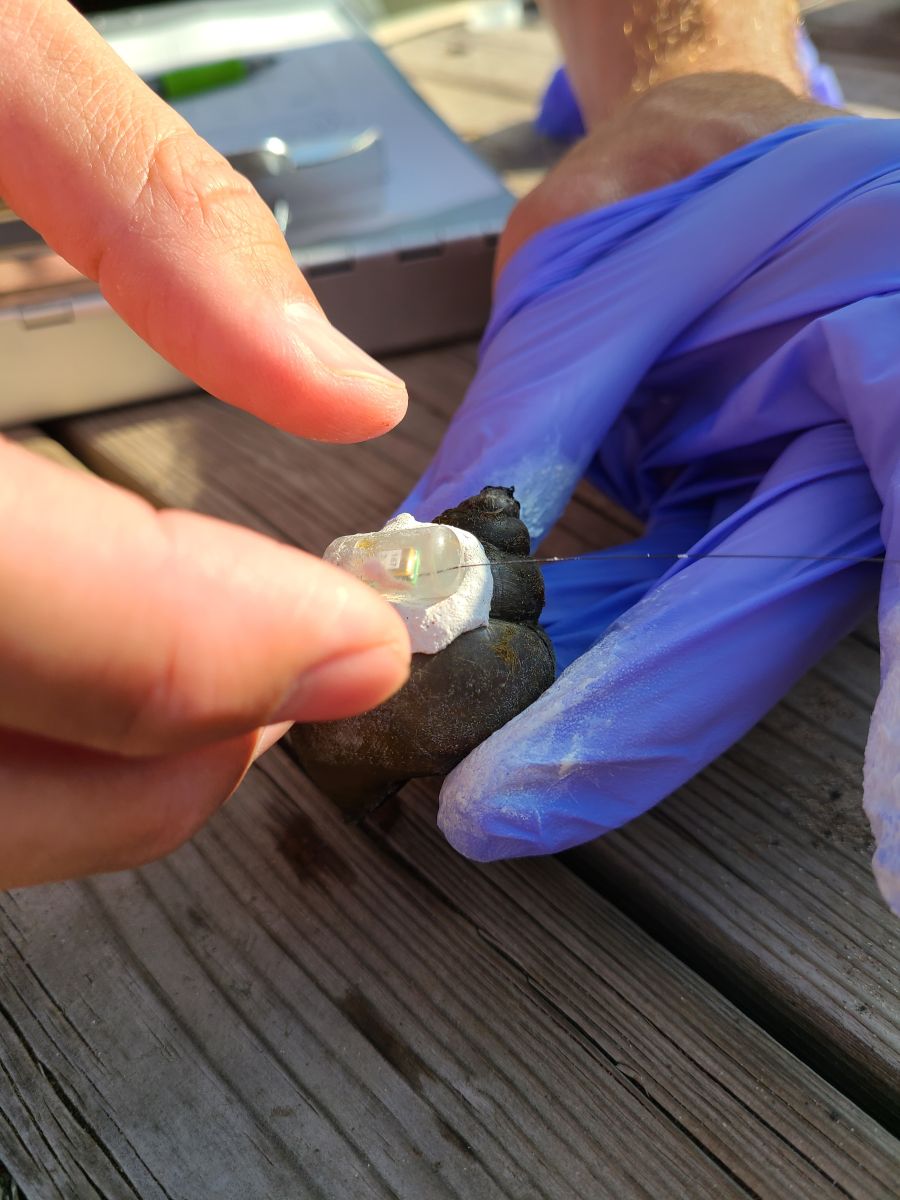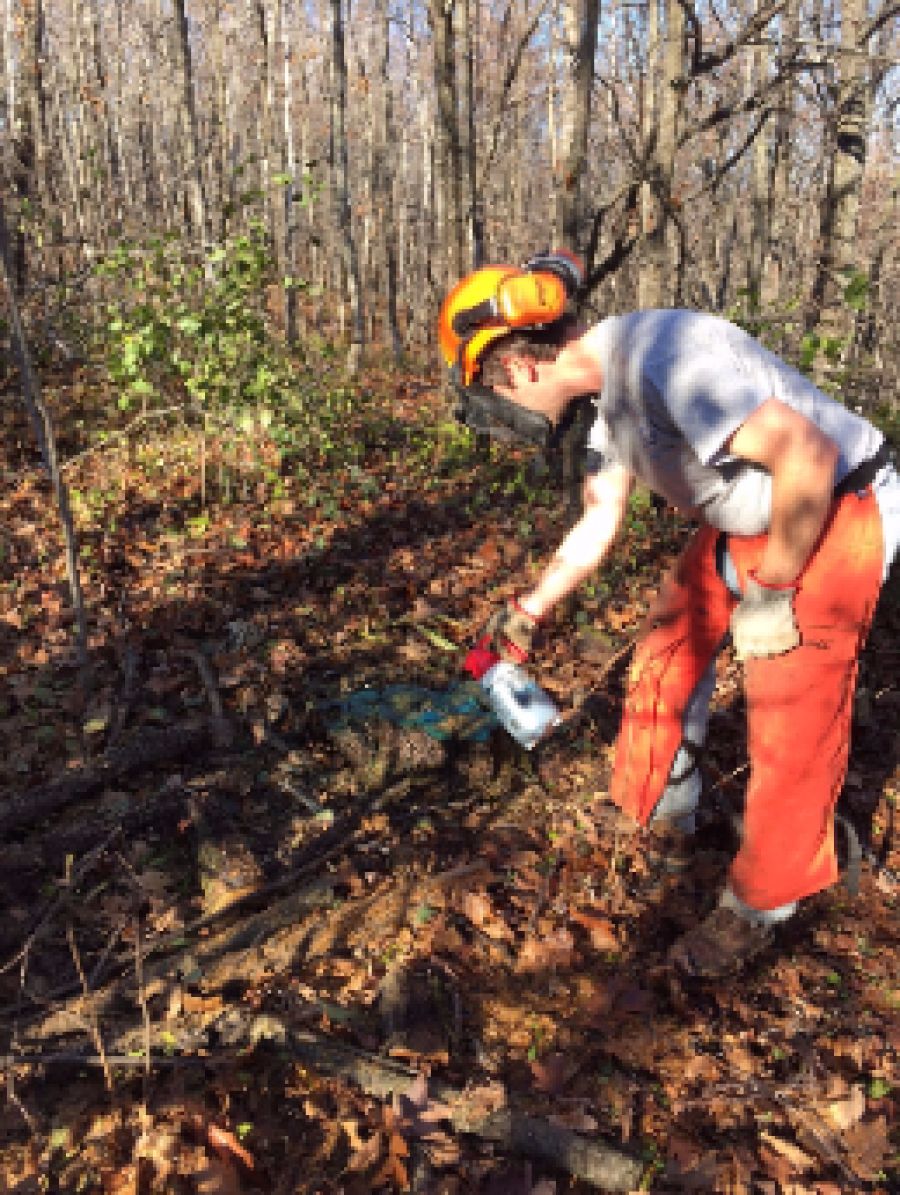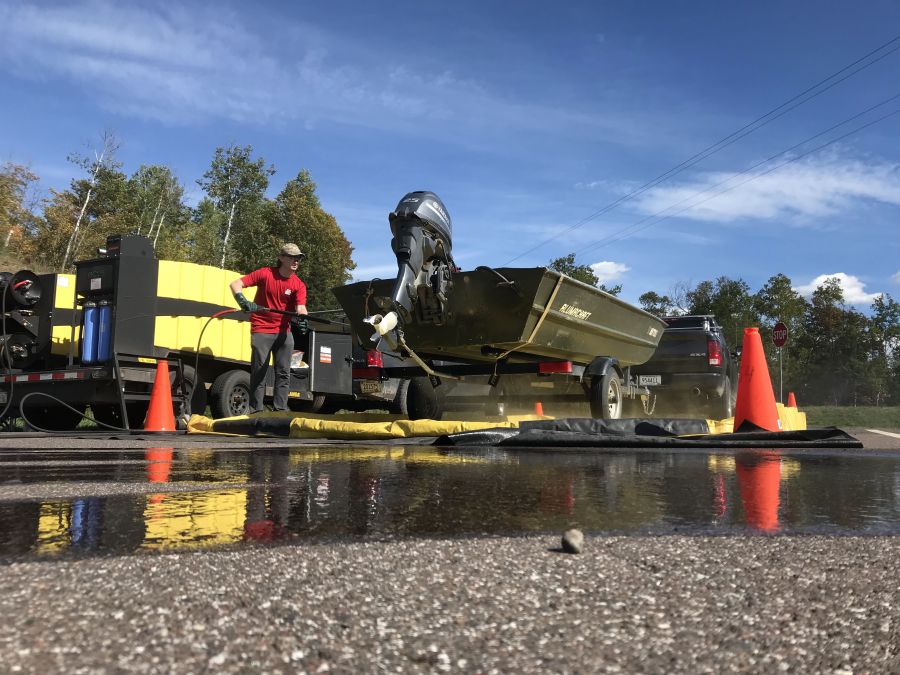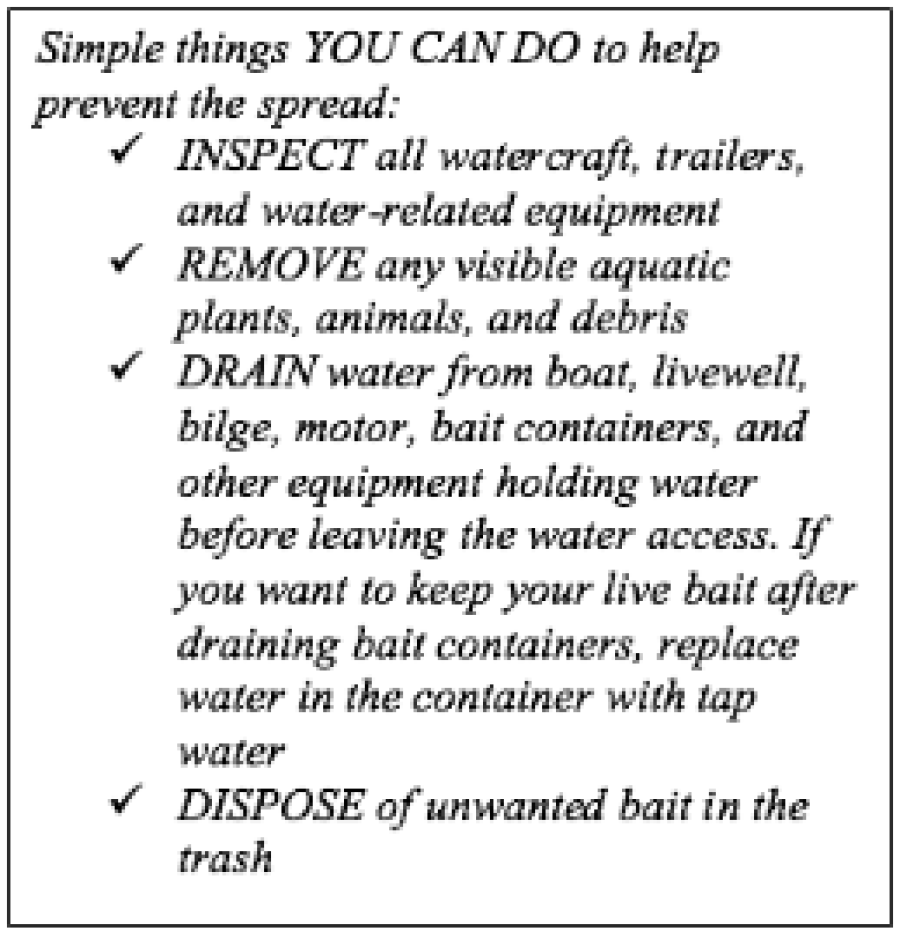Invasive Species
Invasive species are non-native plants, animals, and pathogens that establish in areas outside of their range of origin. These species can thrive in exotic environments and cause economic loss, environmental damage, and possibly harm human health. Due to the potential impact on traditionally harvested resources in the 1854 Ceded Territory, the 1854 Treaty Authority established an aquatic and terrestrial invasive species program in 2009.
Read the 1854 Treaty Authority Invasive Species Management Plan (2023).
Identification
1854 Ceded Territory Aquatic Invasive Species (AIS)
We work with other management agencies to monitor the establishment and curb the impacts of specific AIS on lakes and rivers within the 1854 Ceded Territory. We have compiled a List of Infested Waters to help guide our constituents and communities at large in taking extra caution while pursing activities on these waters that are known to contain AIS.
Lake Superior Aquatic Invasive Species
The Ontario Federation of Anglers and Hunters has produced The Lake Superior Aquatic Invasive Species Guide that lists fish, invertebrate, and plant invasive species that are either established in or threaten Lake Superior.
1854 Ceded Territory Terrestrial Invasive Species (TIS)
We work with multiple partners and government entities to detect and document new locations of noxious weeds that are regulated by the Minnesota Department of Agriculture. The 1854 Treaty Authority also helps document the spread of known non-native species for possible assessment by the Minnesota Noxious Weed Advisory Committee and identifying new non-native species. We upload these detections to a national database (EDDMapS) for later use by 1854 and our partners.
For a more in-depth review of all the invasive species on our radar, check out these supplemental Terrestrial Invasive Species Identification and Aquatic Invasive Species Identification guides.
Monitoring
Our invasive species staff has put a lot of emphasis on investigating the presence and impacts of invasive species. For instance, spiny waterflea (Bythotrephes longimanus) impairs waterways by eliminating edible zooplankton available to support fish species. Surveillance for spiny waterflea by way of sampling “tows” is a successful way to identify their presence. After the identification of spiny waterflea in Lake Vermilion in 2015, we established a goal to survey surrounding lakes, like Trout Lake, due to their higher probability of spreading. We also conduct surveys for rusty crayfish, zebra mussels, mystery snails, and plants.
Research
From 2013 to 2017, we researched how the invasive rusty crayfish (Orconectes rusticus) affected aquatic vegetation. During the summer field season, “enclosures” and “exclosures” were set up on Dumbbell Lake to assess how rustys might graze on manoomin. The data collected supplied repetitive results having negative effects on the density and population of wild rice, although it was not always a preferred food source. Read the 2017 Technical Report on Potential Impacts of Rusty Crayfish on Wild Rice in the 1854 Ceded Territory.
In 2021, the Invasives Crew teamed up with Wildlife to track the seasonal migration of the Chinese mystery snail (Cipangopaludina chinensis). These golf ball-sized snails are known to dissapear in the fall to destinations unknown. We used telemetry transmitters to track them, even under the ice. Read the full report here (Mystery Snail Telemetry Technical Report, 2021-2022).

Control
The 1854 Treaty Authority does not own any property within ceded lands, however, maintaining habitat health is very important to sustaining culturally significant species on the landscape. Therefore, partnerships are the key to combating terrestrial invasive species.
We have a successful partnership with the City of Duluth in controlling invasive species at Hawk Ridge Observatory and the Lake Superior Zoo. Habitat improvement on Duluth’s public lands by way of garlic mustard, common buckthorn, and glossy buckthorn removal has been a HUGE success, made possible by the collaboration from our employees, multiple entities, and the support of extensive volunteer networks.
We assist the Minnesota DNR in a variety of terrestrial invasive species control projects throughout the 1854 Ceded Territory, including Moose Mountain Scientific and Natural Area (SNA), Minnesota Point Pine Forest SNA, St. Louis/Red River Stream Bank Protection Area, Fond du Lac State Forest, Blackhoof Wildlife Management Area, and the St. Louis River Ruffed Grouse Management Area. The 1854 Treaty Authority has started collaborating with St. Louis County and Minerals on county tax-forfeitted lands within the Cloquet Valley State Forest and the Skibo area to eradicate early infestations of common buckthorn.
1854’s invasive species work extends to federal lands as well. We partner with the U.S. Forest Service to treat terrestrial invasive species found in the Superior National Forest such as: common tansy, spotted knapweed, Canada thistle, bull thistle, common St. Johnswort, garden lupine, and crown vetch. We have also expanded our efforts in surveying and removing early detected invaders like garden valerian (Pimpinella saxifraga), wild parsnip, Queen Anne's lace, and more within and around the Superior National Forest before it's too late to control them.

Awareness
Public awareness and action are essential to preventing the spread of invasive species. That is why the 1854 Treaty Authority has emphasized public outreach, providing invasive species information, lessons and services at public events, in schools, and at high traffic locations.
Boat Inspection and Decontamination
In order to assist with preventing the spread of AIS, 1854 provides outreach to raise awareness and hopefully curb citations for transporting any invasive species. We staff public boat accesses to offer voluntary boat inspections, and if necessary, decontamination. Our decontamination unit is a high pressure and high temperature water sprayer. (Many area boaters clean off their boats with a personal pressure washer, and although it does knock the critters off, it does not kill them. To actually decontaminate and be ready to launch immediately, the water in our unit is heated up to 140F degrees.)
Stop Aquatic Hitchhikers
Many AIS were unintentionally introduced, arriving in shipping ballast water and through a variety of other human activities. Free from predators and competitors from their native place of origin, AIS can out-compete native species with their typically high rates of reproduction, survival, and spread. Eradication can be costly and, in most cases, not effective or even possible, therefore prevention is the most cost-effective way at protecting our native waterbodies. The 1854 Treaty Authority has joined the "Stop Aquatic Hitchhikers" campaign to help prevent the spread of invasive species within the 1854 Ceded Territory.
Habitattitude
Some AIS are introduced through the release of pets into the wild. Unwanted aquarium species such as fish, reptiles, plants, and snails are often dumped into the nearest pond or river. Mostly, these creatures perish in unpleasant ways. However, such as with the goldfish, Chinese mystery snail, or Eurasian watermilfoil, these organisms may flourish and become a problem. The “Habitattitude” campaign offers resources for the safe relocation of pets.
Play Clean Go
1854 assists on the partnership of various Minnesota agencies, and provides outreach on the "Play Clean Go" message at various outreach events. Invasive species can hitch a ride anytime you are playing and working outdoors! Removal efforts can be costly and have negative impacts on the ecosystem (though less than TIS cause). Therefore, prevention is the most cost-effective way to protecting our native landscapes, wildlife, and resources we all depend on.
Stewardship
Are there invasive species on your private property? For those individuals that are moved to be active stewards for their time on turtle island, you can maintain the balance in your own backyard. 1854 has some great resources for landowners, which include options that fit your values, infestation, and pocketbook:
What YOU Can Do: Buckthorn Brochure
Identifying Invasive Buckthorn & Honeysuckle, and their Native Plant Look-a-likes (NE Minnesota)
You can also help protect our native pollinators, birds, and other wildlife by doing your part to remove invasive species and provide food and habitat through Minnesota Board of Water and Soil Resources's (BWSR) “Lawn2Legume” program. Make sure to avoid those plants listed on their “Non-native Plant” list, and focus on using BWSR’s “Native Plant” list. Applications for training and reimbursements are on a rotation, so check their website for current availability and deadlines.

